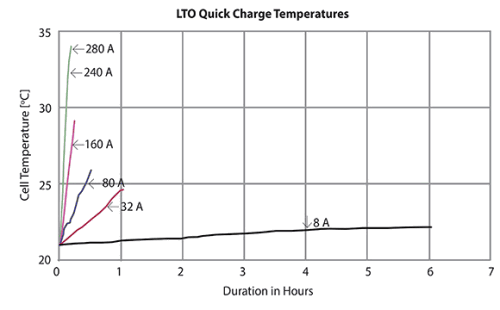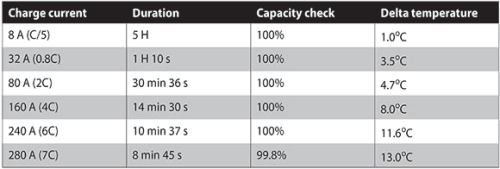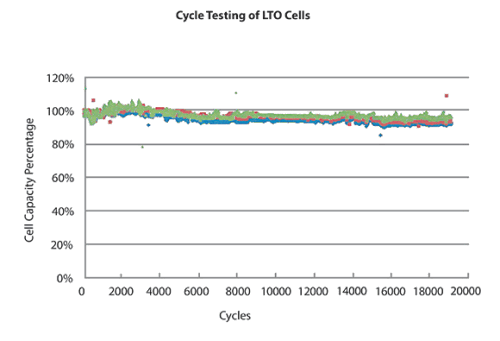
In today’s world, alternative energy together with the generation and storage of energy is discussed in almost every circle. Different ways of power generation through a whole plethora of methods such as solar, wind and nuclear are currently used all over the world.
The biggest system drawback of the majority of these generation methods is the storage of energy.
Battery technology is the one area that has not kept up with the technology changes in the alternative power generation chain. Although lots of investment in research and development has gone into battery technology, the focus is mainly on electric vehicle application. From an alternative energy storage perspective, these battery technologies are too expensive, at this stage, for implementation into large-scale energy storage facilities.
Subsequently, lithium titanate oxide, or LTO, technology was brought into the equation. A lithium-titanate cell is a modified lithium-ion cell that uses strong and indestructible lithium-titanate nanocrystals, instead of carbon, on the surface of its anode in the cell.
Lithium-titanate nanocrystals give the anode a surface area of about 100 square metres per gram, compared with 3 square metres per gram for carbon, allowing electrons to enter and leave the anode much faster. This makes fast charging and discharging possible and provides high currents when needed. LTO technology allows for a charging and discharging rate of up to
10 Coulombs without limiting the lifespan of the cells. Lithium-titanate cells also last longer than any other battery cell technology in use today.
During independent tests, several 40 Ah LTO cells were tested at different rates of charge. Figure 1 is a diagram showing the different charge currents implemented, from 8 A up to 280 A, against the resultant time it took for the cells to be charged to capacity.

The temperature profile of the 40 Ah LTO cells was recorded during the charge cycle (Figure 2). It is clear from the results that the cells do not overheat during rapid charge cycles. In each case a 100% state of charge was achieved, except for the 280 A charge where slightly less than 100% was achieved. The result of the charging test of the LTO cells is displayed in Table 1.


The LTO cells obtain 25 000 to 30 000 charge cycles. They can be charged and discharged, between temperatures from -40⁰C up to +60⁰C, without any performance degradation. The operating temperature range of the LTO cells is much higher than any other battery technology available in production today. Independent tests show that LTO cells which are cycled for 19 000 cycles only degrade by around 5%. Therefore, after 19 000 cycles, 95% of the capacity is still available.
A disadvantage of lithium-titanate batteries, apart from their higher cost, is that they have a lower nominal voltage (2,4 V). This leads to a lower specific energy (about 110 Wh/kg) when compared to conventional lithium-ion battery technologies, which have a nominal voltage of 3,7 V. However, some lithium-titanate batteries are reported to have an energy density of up to 177 Wh/l. The lower specific energy of the LTO cells disqualifies them for use in electric vehicles, but in environments where weight is not an issue, the LTO outperforms any other battery technology.
Furthermore, LTO cells have the advantage of delivering 100% of their stored energy without any damage to the cells, compared to traditional lead-acid cells delivering 50% and lithium-ion batteries delivering around 60-80% of their stored energy. LTO technology can therefore deliver energy at much higher rates – see Figure 3.

Charging LTO cells is much easier than other battery technologies. The LTO cells are charged with a constant current supply up to 99%, after which a constant voltage is applied. This constant current charge can be done at 10 times the capacity, resulting in a full charge after only 6 minutes.
During the constant current charge the cells do not heat up nearly as much as other lithium technologies and no venting of any gases is detected during the charge process. Due to their 25 000-cycle lifespan, LTO technology will have a much smaller environmental impact when compared to lead-acid or any of the other available lithium cell technologies.
During local tests, the cells were submitted for destructive tests to determine safety. The cells were cut in half, set alight and crushed in a 100 ton press. No combustion, explosion or violent reaction was detected in any of these tests. This proves that LTO cell technology is an inherently stable chemistry, ideal for applications where other more unstable technologies might become problematic. Potential applications of LTO technology include solar and alternative energy storage, heavy motor vehicle and industrial applications, as well as power sources for remote communication systems.
In South Africa, Power Extreme Technologies is the leading developer of fit-for-purpose batteries incorporating LTO technology. Power Extreme has researched and developed several battery models for different applications to assist users to solve issues such as charging time, longevity of batteries and limited power availability, generally associated with existing battery technologies.
The Power Extreme family of AfriStreme batteries include 24 V batteries for industrial and railway applications. It includes fully trackable IoT-enabled batteries for the communications industry, a range of 24 V and 12 V vehicle starter batteries with a standard 5-year warranty and custom designed batteries for the solar industry.
With the technology incorporated into its batteries and given the performance of the batteries designed and manufactured by Power Extreme, a large demand for LTO technology is envisaged in the foreseeable future in various different industries in South Africa as well as in the rest of Africa.

© Technews Publishing (Pty) Ltd | All Rights Reserved